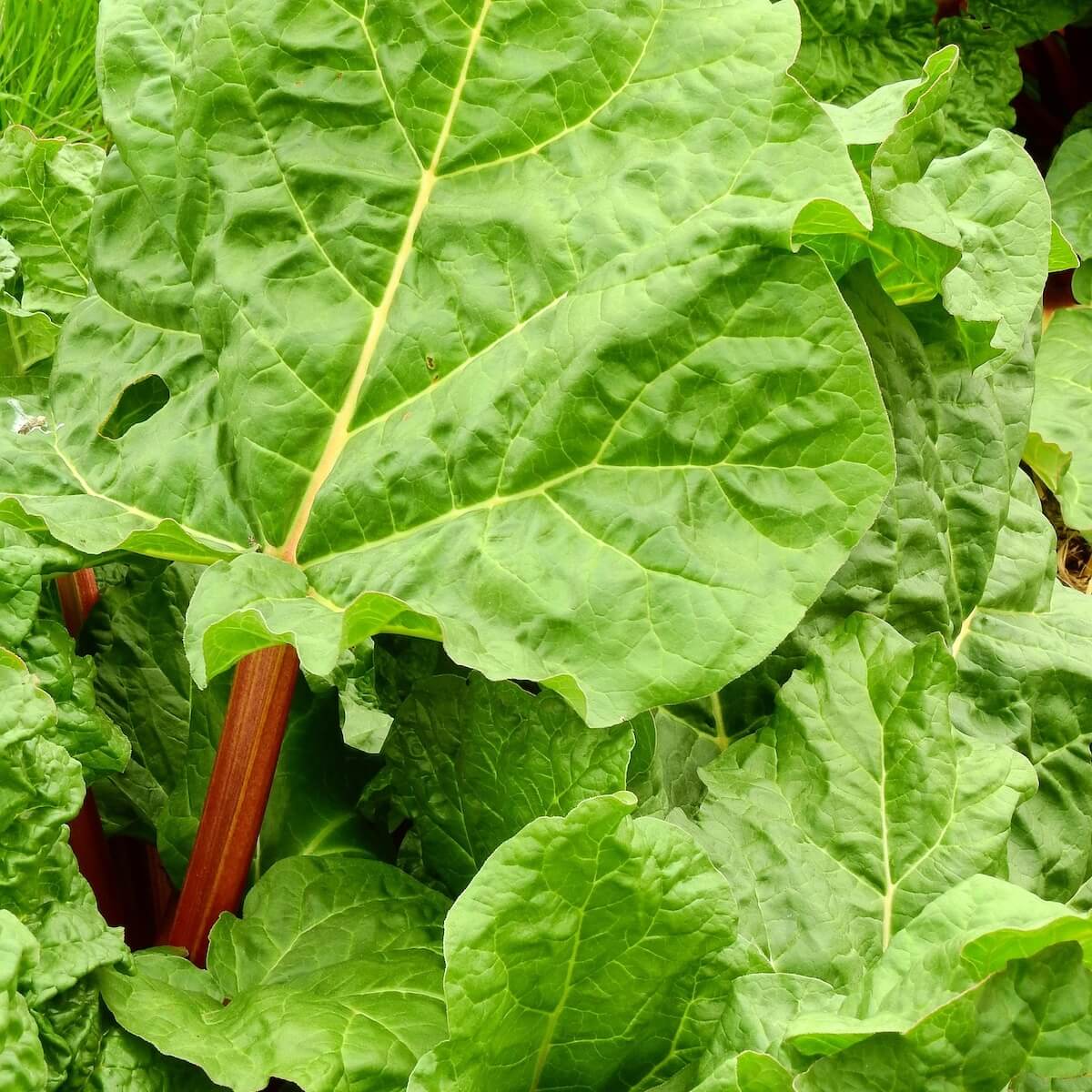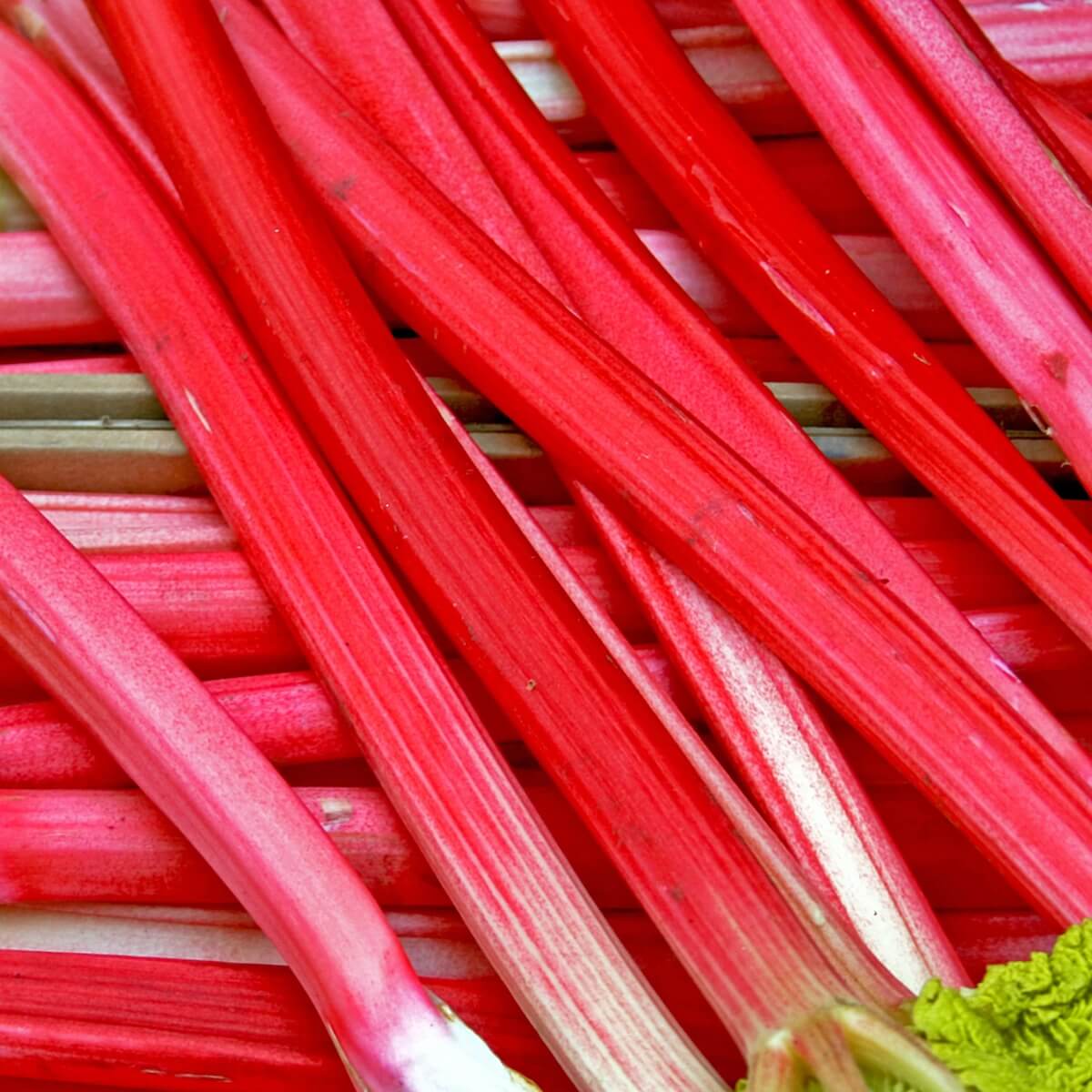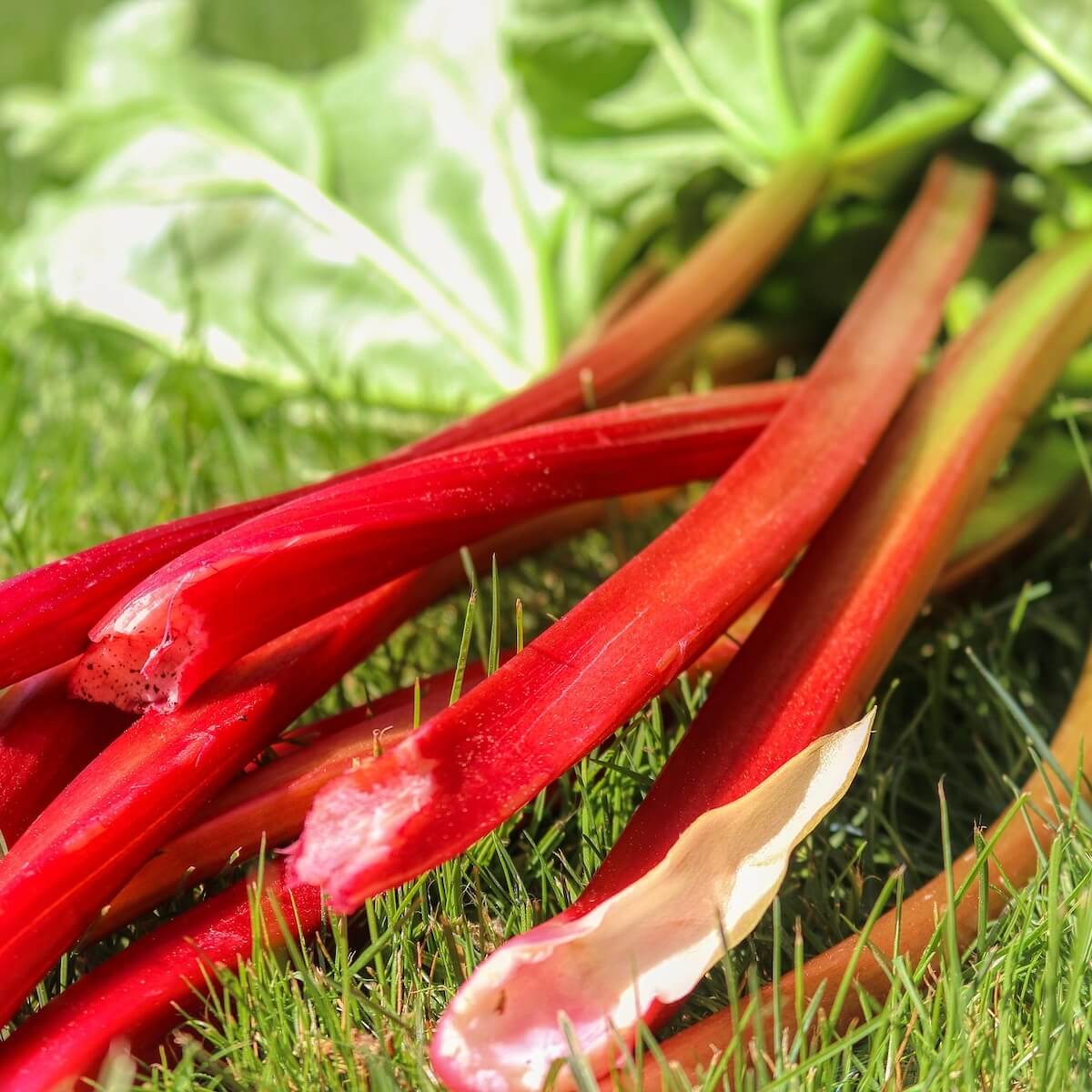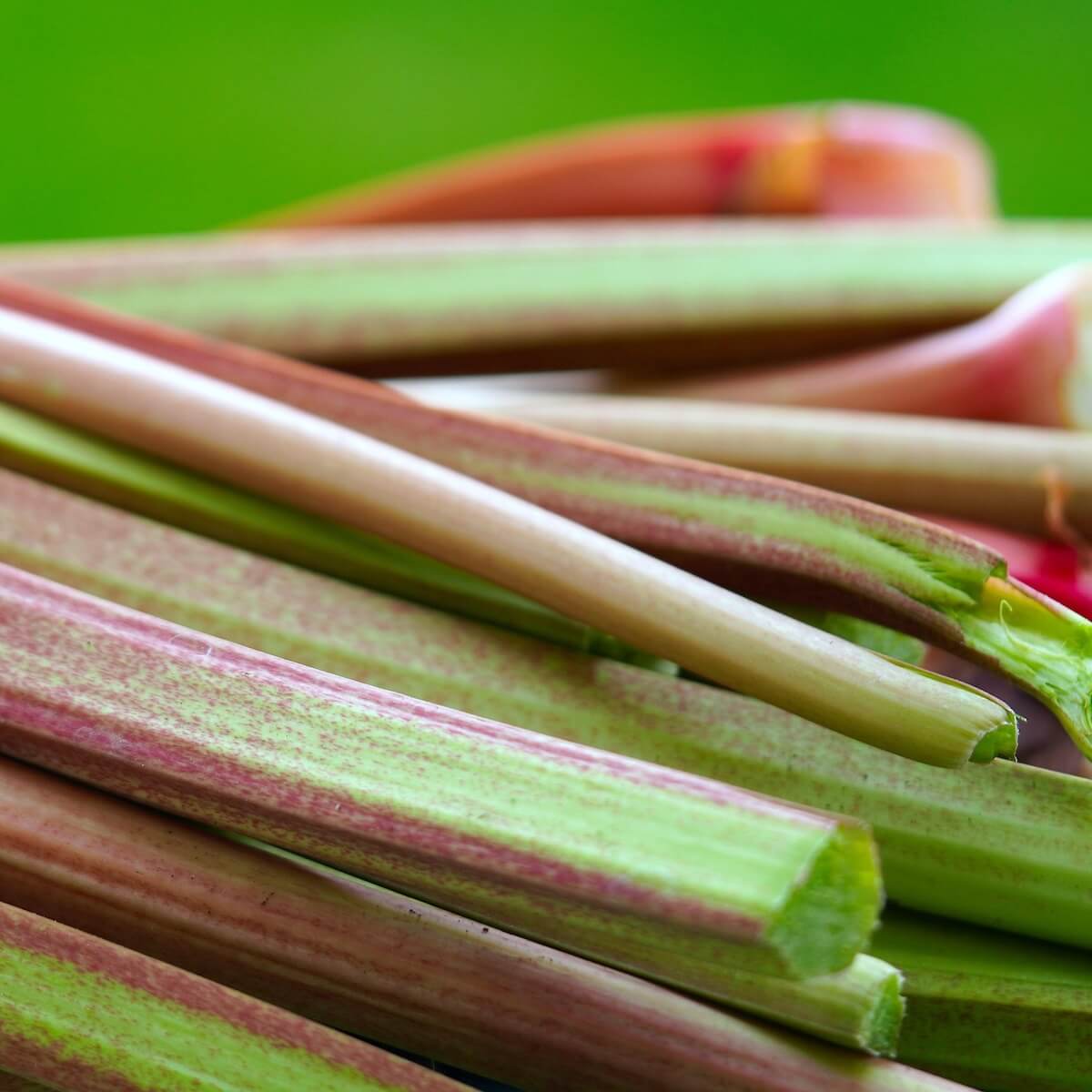Growing Rhubarb: The Easy, Rewarding Crop for Every Garden
Rhubarb: A Comprehensive Guide to Growing This Classic Kitchen Garden Favourite
Rhubarb is a dependable and flavour-packed perennial well-suited to UK gardens. Renowned for its vibrant red or pink stalks and tangy, citrusy flavour, it brings both ornamental appeal and culinary versatility to the vegetable patch. With minimal maintenance, it rewards growers with generous harvests year after year—perfect for traditional desserts, savoury accompaniments, homemade jams, and even drinks. When planted in the right conditions and properly cared for, it becomes a long-lasting and highly productive addition to any garden.
Why Grow Rhubarb?
This is one of the easiest edible perennials to grow, making it a firm favourite among gardeners. Once established, it requires little ongoing care—mainly feeding, watering during dry spells, and seasonal harvesting. One of its key advantages is its early cropping season. It’s among the first plants to break dormancy in the spring, providing fresh stalks when other crops are still dormant. Its resilience, productivity, and culinary value make it an essential plant for any productive garden.
Ideal Growing Conditions
For vigorous, healthy plants, they require deep, fertile, well-drained soil enriched with a generous amount of organic matter. A sunny site is ideal for achieving maximum yields, but the plant tolerates light shade without significantly compromising performance. Aim for a soil pH between 6.0 and 6.8, as neutral to slightly acidic conditions are ideal for optimal root development and nutrient uptake.
Drainage is critical, as the crowns are highly susceptible to rot if left in waterlogged soil. Raised beds or improved clay soils are excellent choices in wetter regions. Temperature also plays a role: winter dormancy, triggered by cold weather, is essential to initiate vigorous spring growth, while moderate temperatures (between 15–25°C) throughout spring and early summer support strong stem development.
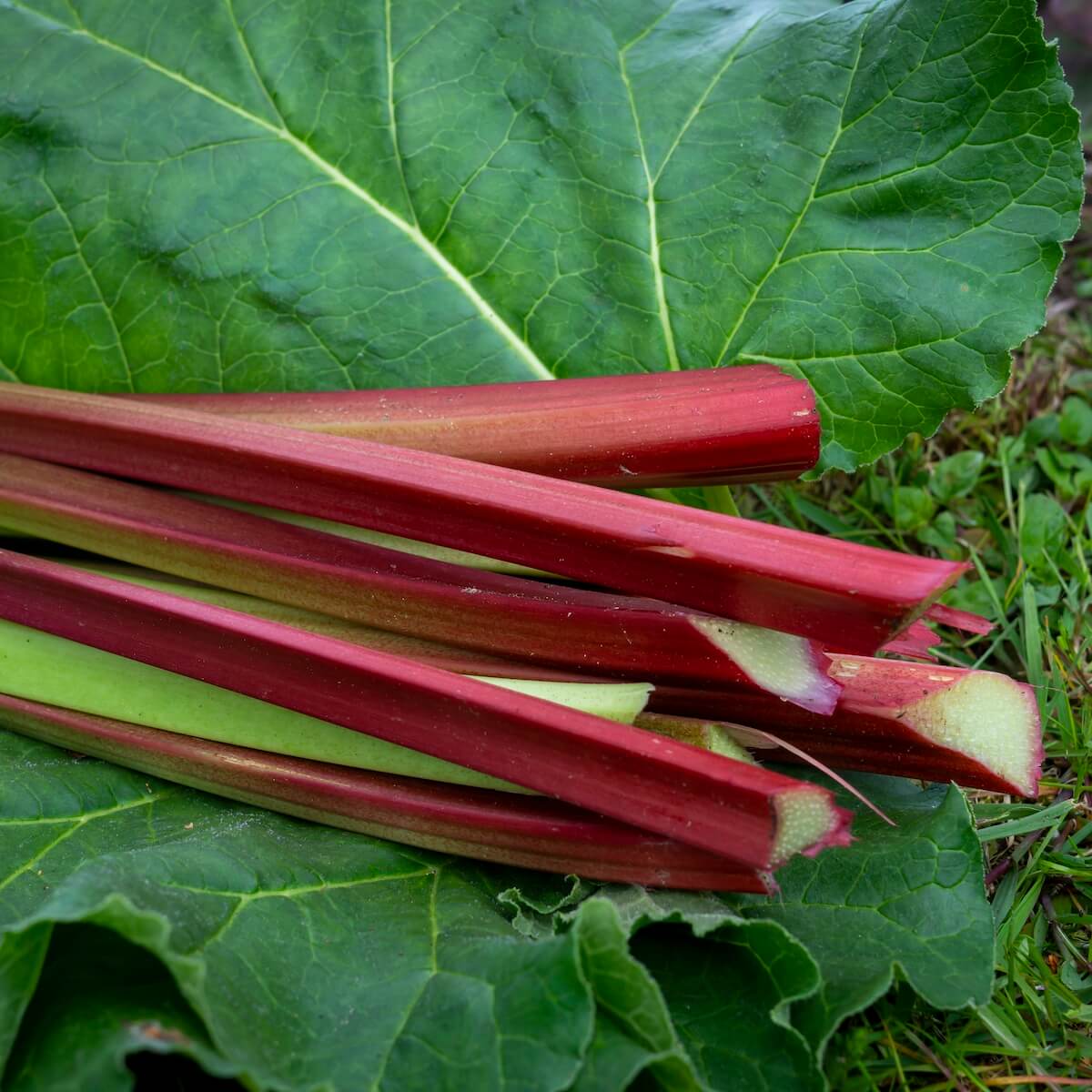
How to Plant and Care for Rhubarb
For the best results, plant crowns during their dormant season, from late autumn through to early spring. Avoid using seed-grown plants, as these are slower to mature and less uniform. Space crowns around 75cm apart in all directions to give each plant enough room to spread and develop its signature large leaves.
Keep the area weed-free and water well during dry spells, particularly in the plant’s first few seasons. Avoid harvesting in the first year after planting; this allows the crown to establish a robust root system that will support productive growth in future seasons.
Key care tips include:
- Mulching annually in autumn with well-rotted manure or compost to feed the soil and suppress weeds.
- Removing flower stalks as they appear to prevent energy diversion from stem growth.
- Dividing mature plants every 4–5 years in early spring or late autumn to maintain vigour and prevent overcrowding.
Harvesting and Storing
Harvesting usually begins in mid-spring, typically from April, and continues through to late July. To harvest, grasp each stalk near the base and pull gently while twisting to one side. Avoid cutting the stems, which can leave stubs that may invite rot.
Never harvest more than two-thirds of the plant at one time, and always leave several stems intact to allow photosynthesis to continue. The leaves are toxic due to their high oxalic acid content and should be discarded or composted; they should never be eaten.
Freshly picked stalks will keep in the fridge for several days. For long-term storage, slice and freeze stalks raw or stewed to enjoy their flavour throughout the year.
Common Problems and How to Solve Them
Rhubarb is generally low-maintenance and disease-resistant, but a few issues can affect performance:
- Crown rot is the most common problem, especially in poorly drained soil. Ensure good site drainage and avoid heavy watering during wet periods.
- Slugs and snails may feed on emerging shoots, but their impact is usually minor.
- Thin or spindly stalks often indicate overcrowded crowns, poor soil nutrition, or insufficient light. In early spring, divide plants and feed them with a balanced organic fertiliser.
Monitoring soil health and spacing can easily avoid or correct most issues.
Choosing the Right Varieties
Selecting the right variety is key to getting your crop’s best flavour, colour, and productivity. Some varieties offer intense red colouring ideal for desserts and preserves, while others deliver robust, tart flavours suited to savoury recipes or winemaking.
Whether you’re growing rhubarb for ornamental impact, culinary versatility, or sheer yield, choosing a reliable cultivar will ensure years of delicious harvests.
From Darren’s Patch
Rhubarb has been a constant in my garden for years—it’s one of those plants that quietly earns its keep, season after season. I love how it’s up and growing before anything else, often pushing through the soil while the weather’s still chilly. There’s something deeply satisfying about harvesting those bold, juicy stalks when the veg patch is still waking up. I tend to mulch mine heavily in autumn with well-rotted manure, which keeps the crowns happy and productive. My go-to variety is ‘Timperley Early’ for its reliability and early harvests—but I also keep a few clumps of red-stemmed types for making vibrant crumbles and jam. If you’re after a low-maintenance, high-reward crop, rhubarb’s hard to beat. Give it a good spot and a little care, and it’ll repay you tenfold.
![]()
Discover the Best Rhubarb Varieties for UK Gardens
You can explore our recommended varieties to find the perfect match for your garden, taste preferences, and growing conditions. From classic favourites to RHS award-winning cultivars, these are the best plants for consistent success.
Rhubarb Fulton's Strawberry Surprise
Fulton’s Strawberry Surprise is a stunning variety that brings both beauty and flavour to your garden. Its bright red stems stand out brilliantly against the large green leaves, making it a true showstopper. This vigorous cultivar produces sweet, tender stalks perfect for pies and crumbles, while being remarkably easy to grow in most UK gardens. Read More
Rhubarb Raspberry Red
Raspberry Red stands out with its vibrant crimson stalks and impressive size, making it a garden favourite. This reliable variety produces sweet, tender stems perfect for crumbles, pies, and jams. Easy to grow and incredibly hardy, it delivers abundant harvests year after year, bringing both ornamental appeal and delicious flavour to your garden. Read More
Rhubarb Stockbridge Arrow
Stockbridge Arrow delivers exceptional flavour and impressive straight stems that are perfect for both kitchen gardens and allotments. This reliable variety produces long, tender stalks with a delicate green-pink colouring. Its vigorous growth and early cropping habit make it a favourite among gardeners seeking top-quality rhubarb for cooking and preserving. Read More
Rhubarb Timperley Early
Timperley Early brings the joy of fresh stems weeks before other varieties, making it a top choice for eager gardeners. This reliable cultivar produces tender, pink-red stalks with excellent flavour from early spring onwards. Its vigorous growth and frost-hardy nature make it perfect for northern gardens and early-season harvests. Read More
Rhubarb Victoria
Victoria is a beloved heritage variety that has graced British gardens since Victorian times. Its thick, tender stems offer the perfect balance of sweetness and tang. This reliable performer delivers abundant harvests of green-tinged red stalks that excel in pies, crumbles, and preserves, making it a classic choice for every garden. Read More

